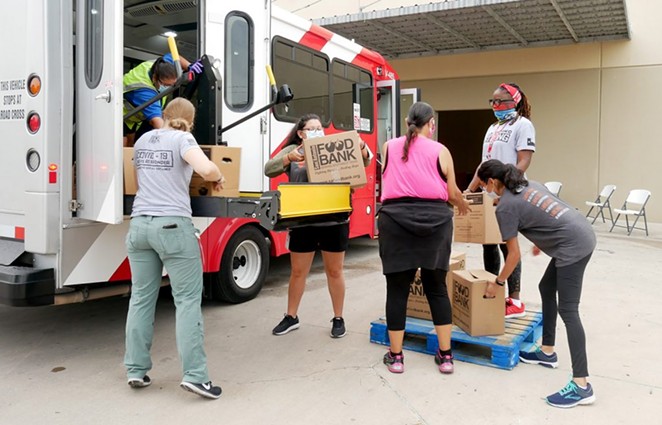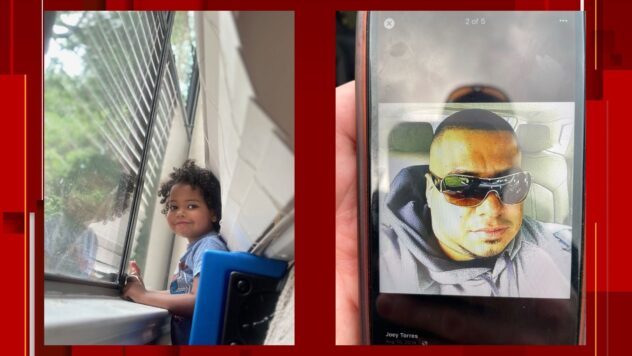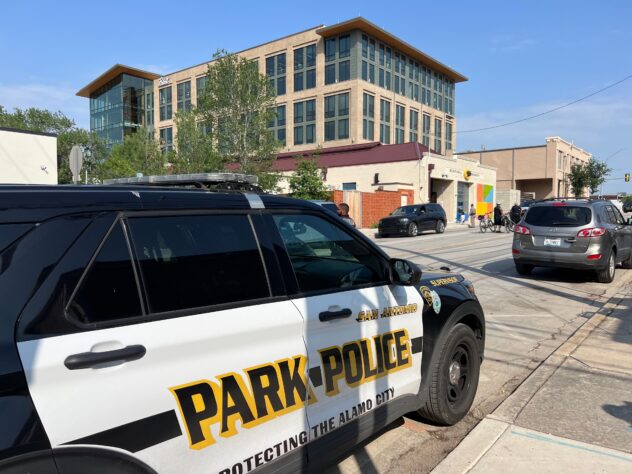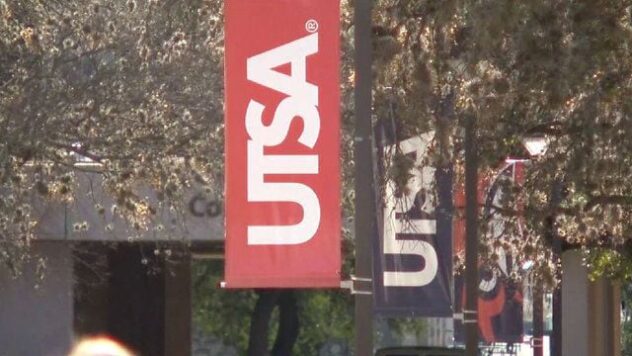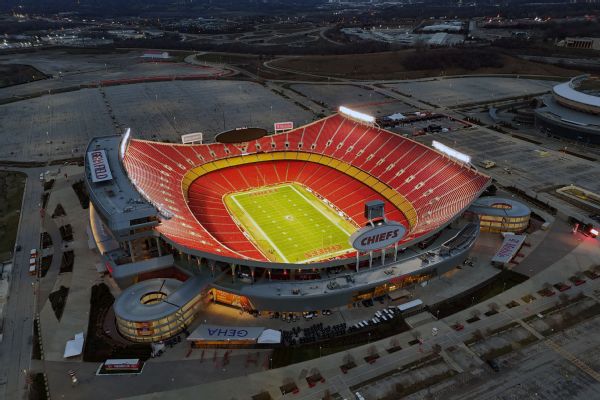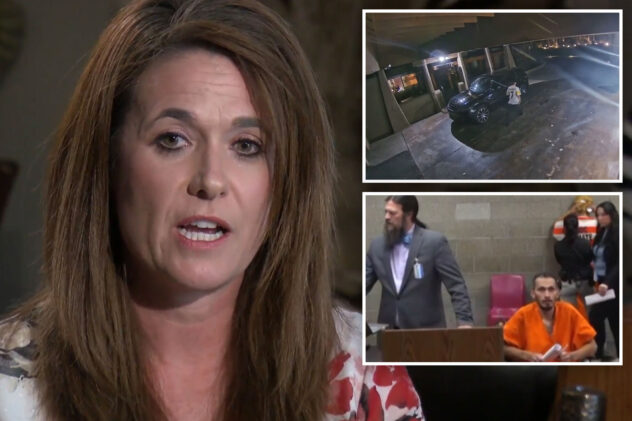Should SAHA Do More to Address Food Insecurity During COVID-19?
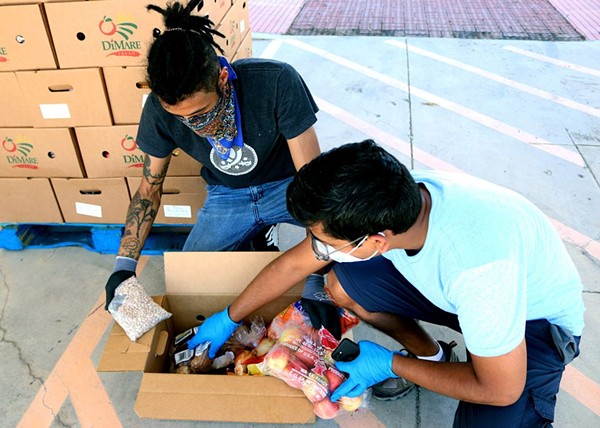

- Andrea Moreno / Heron contributor
- Volunteers Ashanti Williams (left), 30, and Saurau Majumdar, 29, sort through boxes of food at Eco Centro at San Antonio College on June 24. Each box contain apples, oranges, onions, potatoes, carrots and a pound of pinto beans.
For Jeannette Rico, 30, a single mother and resident at Alazán-Apache Courts, the coronavirus pandemic has made accessing food harder than ever.
“I have three children, and so it was hard to walk with them [to the nearest pantry] all at once,” Rico said, “but there’s nothing being given out, so that’s not even the problem right now. There’s no food at all.”
The work she did as a babysitter has dried up. Now she and her kids aren’t able to leave the apartment at all.
On June 30, Rico discovered her oldest son, who is 14, was exposed to a relative who tested positive for COVID-19. Because he was not showing sufficient symptoms, her son could not get tested at multiple testing sites, she said. Now, she and her kids must self-quarantine at home, where she must rely on family and friends to bring her groceries.
“I don’t always know if anybody’s able to bring me anything because a lot of people are afraid to get near,” Rico said. “It’s like the plague, you know?”
Some residents who live at San Antonio Housing Authority (SAHA) properties say food programs available to those younger than 60 are scarce. Due to the impacts of the coronavirus on people’s finances and food accessibility, they are now arguing for programs that include non-seniors, especially those struggling to access food that meets their nutritional needs. The median annual income of residents in subsidized housing provided by SAHA is $10,000.
Residents such as James Hamilton, 48, who lives at Lewis Chatham apartments, say the difficulty is compounded by the SAHA administration’s lack of comprehensive food distribution programs. Another resident who’s taken up the cause is Pancho Valdez, one of SAHA’s most outspoken critics who lives at the Lofts at Marie McGuire Apartments downtown. Hamilton and Valdez are members of a group called the San Antonio Tenants Union.
When asked about the complaints, SAHA Communications Manager Marivel Resendiz said in an email, “Of more than 55,000 residents and tenants, only Mr. Hamilton and his fellow Tenants Union member, Pancho Valdez, expressed concerns about their food insecurity. There may also be a few others they recruited to attempt to disparage SAHA.”
Currently, the San Antonio Food Bank serves SAHA residents through Project Hope, Commodity Supplemental Food Program, Kids Cafe, and other food programs only accessible to children, the elderly, and pets. The city has its own initiative called the Senior Nutrition Program.
In response to residents’ complaints, Resendiz cited several food deliveries to Lewis Chatham apartments. All but one were from “emergency deliveries” from various local non-profits and from the San Antonio Food Bank.
On May 1, SAHA launched a new food program with the Food Bank to supply “bi-weekly food deliveries” to an additional 150 vulnerable families with essential goods, according to a press release. Residents brought on to the program are selected through self-referrals and wellness checks conducted by the housing authority.
“We expanded our partnership with the Food Bank to distribute food to our residents younger than 60-plus that didn’t not qualify for [the Senior Nutrition Program],” Resendiz said. “It’s specifically for residents who didn’t qualify for those other assistant programs.”
According to the press release, when the program launched May 1, more than 100 new families had food delivered to them at 23 SAHA communities.
But despite the bi-weekly schedule, Hamilton and Brian Gordon, food sovereignty coordinator at Southwest Workers Union, who has helped organize deliveries to SAHA properties during the pandemic, claim SAHA has only made one such delivery, at least at Lewis Chatham on the South Side, describing it as a “publicity stunt.”
Hamilton said at Lewis Chatham one delivery was made May 1, and the case managers there didn’t know if there were going to be more deliveries. He said the next food deliveries for seniors at Lewis Chatham have been scheduled—for Monday and Thursday—but none for younger residents were made in June, and none are scheduled for July.
Early On
At the start of the COVID-19 pandemic here, on March 13, the San Antonio Housing Authority distributed flyers to residents announcing the suspension of food distributions, effective Monday, March 16, until further notice.
Food Bank CEO Eric Cooper said SAHA reached out to his staff and asked them to stop delivering to their sites. The restriction was put in place as a precautionary measure to reduce the risk of residents contracting COVID-19, he said.
Still, the piece of paper failed to offer alternative ways for hungry residents to meet their immediate needs. In a panic, multiple tenants called the Food Bank’s emergency hotline, forcing the nonprofit to deliver aid packages to SAHA properties in spite of the ban.
Food Bank senior programs Project Hope and Commodity Supplemental Food Program were not reinstated until 12 days later, on March 27, according to a news report.
In January, when word of the coronavirus was making international headlines, Cooper said the Food Bank was distributing food to 60,000 people a day. The number has risen to 120,000, he said.
Across Texas, roughly 4.3 million adults and 1.6 million children are at risk of going hungry, according to Feeding America’s Map the Meal Gap study published in 2019.
SAHA has adopted other measures to assist residents, including forgiving 25% of due rent in June, and contributing $350,000 to the city’s COVID-19 emergency housing assistance program, to be used only for SAHA residents. In early- to mid-May, when it launched its food program for non-seniors, SAHA at the time reported losing $1 million a month in lost revenue because of the pandemic.
During the Housing Commission meeting last month, SAHA CEO David Nisivoccia said the agency needs more support, not pushback, on upcoming developments that deliver higher amounts of rents close to or at market rate. Those revenues, he’s argued, can be used to finance much lower rents at future residential projects, and to support food programs, and other social services, during times of crisis.
“I would ask people to not be so myopic in their perspective that they would understand the global dynamic of which we are operating in,” Nisivoccia told the commission, “that certain business aspects will support other business aspects and ultimately provide better services to our clients … There are only limited resources.”
‘What Are These Folks Going to Do?’

- Janece Johnson, who lives at Alazan-Apache Courts, receives a box of food on June 26.
The partnership between SAHA and the San Antonio Food Bank brings commodities such as canned vegetables, eggs, and other food staples to residents. Roughly 3,000 out of 55,000 tenants at SAHA properties currently receive food assistance, with most programs serving the elderly and disabled.
After the coronavirus outbreak, “there were people who didn’t meet the [age] criteria who had to go without food,” Hamilton said.. “And some were people who had underlying health conditions like high blood pressure and diabetes. They were forced to eat things that weren’t too healthy for them because they didn’t have anything else.”
Though Valdez qualifies for the Senior Nutrition Program, he believes the current pandemic necessitates more support for tenants younger than 60.
“The people that have always been denied food from the Food Bank are people under 60, which we feel is unjust,” said Valdez. “We’ve got a pandemic, many people don’t have cars, they’re encouraging us to stay home … so what are these folks going to do?”
Cooper said families that have been significantly impacted by COVID-19 can call the nonprofit’s hotline, 210-431-8326, to have an emergency food box delivered to them.
Hamilton said he and other residents began exchanging emails with SAHA officials in an effort to receive food that met his dietary restrictions as a diabetic. “SAHA initially had the stance that the people who don’t qualify for the program aren’t getting anything,” Hamilton said. “And they’re saying this during Covid-19.”
The Smaller Nonprofits

- Photo by Andrea Moreno / Heron contributor
- Pancho Valdez, 68, places boxes of DiMare Fresh onto the cart to distribute to tenants under 60 at the Lofts at Marie McGuire Apartments at 211 N. Alamo St. The boxes were delivered by the Coalition for Food Justice.
Gordon with the Southwest Workers Union has been helping to organize several deliveries to SAHA properties during the pandemic, including some of the emergency deliveries referenced by Resendiz.
In conjunction with other non-profit organizations, Southwest Workers Union and the People’s Nite Market donate around 80 food boxes weekly to SAHA residents, and hundreds more to other sites in San Antonio, according to Gordon. The deliveries began in mid-March after SAHA initially paused the Food Bank distribution. The boxes are donated via a $24 million U.S. Department of Agriculture grant to DiMare Fresh, a Houston supplier, which then sends two trucks full of food boxes to People’s Nite Market each week. Though the grant was recently renewed to last through the end of August, Gordon stressed that they are only providing a temporary solution.
“We’re only a Band-Aid right now,” Gordon said. “Our fear is that we cannot sustain a program like this. We’re really hoping for more leadership from SAHA or the Food Bank on a program.”
In response to long-term food insecurity issues at SAHA, Southwest Workers Union, along with the Food Policy Council, People’s Nite Market, and many SAHA residents, formed the Coalition for Food Justice focused on advocating for more comprehensive food programs that are open to all ages.
“Maybe that would be income-based rather than age-based,” Gordon said.
‘They’re Cheating the Residents’
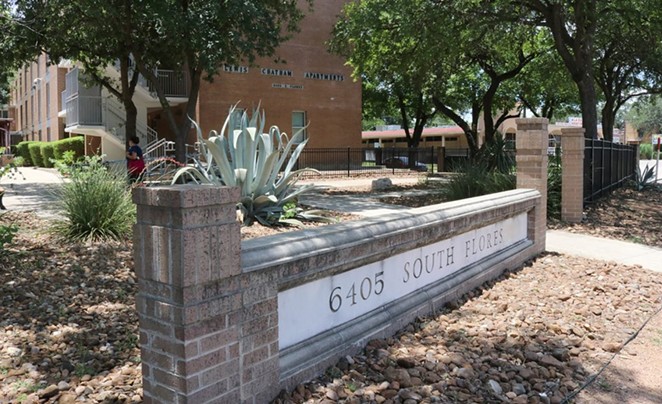
- Photo by Andrea Moreno / Heron contributor
- Residents at the Lewis Chatham Apartments received 25 boxes from DiMare Fresh food supplies, distributed by the Coalition for Food Justice, on June 24.
Though many residents are looking to SAHA for answers, Victoria Evans, a resident of Cassiano Homes, doesn’t think it’s the agency’s responsibility to find a solution to food insecurity facing her community.
“It’s not SAHA’s fault, it has to be the Food Bank’s,” she said. Evans, 28, who’s also receiving assistance from the Food Bank, argued that the products being distributed by the nonprofit are inadequate for those whose survival depends on them.
Evans, a single mother of a five-year-old son, applied for food assistance after she quit her job because she had to watch her son now that schools were closed.
As a volunteer, she used to assemble packages of meat, fruits, and vegetables at the Food Bank from 2015 to 2016. “If someone is depending on that they’re expecting a package of meat or two. Not just necessarily the leftover stuff from the grocery store that nobody wants,” she said. “They’re cheating the residents.”
Not too far away from Evans, Lawrence Peleón, 40, says he’s been happy with the provisions he’s been given. Peleón suffers from epilepsy and relies on the packages distributed through the Food Bank’s partnership with SAHA.
On June 26, he received his first delivery, but said that SAHA didn’t tell him when he’d be getting another one. It’s a dilemma he described as “a waiting game.”
“When you’re dealing with a housing authority in the ‘hood or the barrio, these kinds of agencies don’t give people a lot of information. They do things on their own time,” he said.
During the interview, Peleón repeatedly asked for information about when he’d be receiving his next delivery, if the Heron would be able to arrange for him to receive another package.
“A lot of people around here run out of food, and I just feel like the housing authority needs to keep on giving people these boxes, because it’ll help out a lot,” he said.
Benjamin Gonzalez is a reporting intern at the Heron. He graduated from Trinity University with a bachelor of arts degree in anthropology, and can be reached at [email protected], @BennyCruzG on Twitter.
Michelle Del Rey is a freelance journalist in San Antonio. She graduated from the University of Westminster in London, England with a bachelor of arts degree in journalism, and can be reached at [email protected], @chelledelrey on Twitter.
Stay on top of San Antonio news and views. Sign up for our Weekly Headlines Newsletter.

